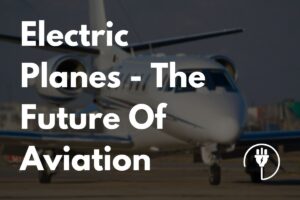In the aviation industry where performance and reliability are a top priority, aviation experts have focused on utilizing top-end technology in the design and manufacture of air vehicles and their parts. Aircraft engines being the primary source of power, are the devices responsible for the conversion of fuel energy into propulsive power by generating sufficient amounts of lift and thrust to overcome drag and gravitational forces. From the Curtiss four-cylinder hydro cooled engine that powered the 1903 Wright Flyer aircraft to the age of jet engines, the evolution has been steady and progressive. However, it’s notable to credit the growth in the market of air travel as one of the greatest accelerators of this evolution.
Importantly, let’s recall that there are generally two types of aircraft – single-engine, and multi-engine aircraft. The majority of the aircraft are multi-engine, due to the obvious merits of increased power and increased levels of safety due to redundancy. This article discusses the technical aspects of the five main types of aircraft engines utilized in multi-engine aircraft, namely; Turboprop Engines, Turboshaft Engines, Turbojet Engines, Turbofan Engines, and Ramjet Engines.
1. Turboprop Engines

Aircraft propellers are driven by turboprop engines, which are turbine engines. An intake, reduction gearbox, compressor, combustor, turbine, and propelling nozzle make up a turboprop. The compressor draws air into its intake and compresses it. Afterwards, fuel is introduced to compressed air in the combustor, where it is burned. The heated air is forced into the turbine by the turbine's blades. The compressor is powered by a portion of the turbine's output. The propeller receives the remainder of the power through the reduction gear. In the propelling nozzle, the gases continue to expand until they reach the pressure of the atmosphere. The turboprop's propelling nozzle generates a relatively tiny amount of thrust. Contrary to a turbojet, the exhaust gases from the engine do not possess sufficient energy to generate considerable thrust, as the propeller drives virtually all of the engine's power (Greatrix 2012).
2. Turboshaft Engines

It is a jet engine that has been optimized to provide shaft power rather than thrust output. Turboshaft engines are most often employed in applications that demand a compact, powerful, low-weight engine, such as in auxiliary power units and helicopters. The gas generator of a turboshaft engine comprises a compressor, combustor, and turbine, much as a turbojet does. However, an extra power component, comprised of rotors and a drive shaft, has been included in the design of the turboshaft in comparison to the turbojet (Greatrix 2012).
3. Turbojet Engines

It is a jet engine in which air is compressed by a turbine-driven compressor before being forced into a combustion chamber, where fuel is introduced. After ignition, the gases expand and flow into the turbine and a nozzle at the rear of the engine, where they are released. As a result of the exhaust gases' backward velocity, forward thrust is produced (Roux 2007).
4. Turbofan Engines

This variation of the turbojet uses a ducted fan that is powered by the jet core to accelerate jet core efflux and bypass air to create thrust. Bypass ratio refers to the ratio between the mass of air bypassing the engine core and the mass of air passing through it. As such, low bypass turbofan engines receive most of their thrust from the jet engine core efflux, while high bypass turbofan engines derive most of their output from the fan (Roux 2007).
5. Ramjet Engines
It’s a jet engine that uses air to propel itself and has no significant mechanical components. An intake tube, which is specifically designed, compresses the air before it is burned. As soon as the gasoline poured into the engine is ignited, the combustion process continues on its own. Jet engines provide forward thrust as a result of hot exhaust gas rushes from the back.
Combustion pressure must be higher than that of the nozzle exit to keep the flow going. An external air stream is rammed into the combustion chamber using the vehicle's forward speed to create high pressure.

In comparison to turbojets, the ramjet is smaller, simpler, and lighter. So long as aerodynamic losses aren't overwhelming, ramjets perform better as vehicle speed rises (Ingenito 2021).
Therefore, despite the knowledge of the technical aspects of the different types of aircraft engines, operators, and original equipment manufacturers, OEMs, are still sensitive to the economic aspects of the choice of engine for specific air vehicles. However, from our technical desk, we are obliged to keep feeding you with resourceful articles. Who said rocket science isn’t for everybody anyway?
Works Cited
Greatrix, David R. "Turboprop and Turboshaft Engines." Powered Flight, 2012, pp. 269-289.
Ingenito, Antonella. "Fundamentals of Ramjet Engines." Subsonic Combustion Ramjet Design.Springer, Cham, 2021, pp. 5-7.
Roux, Elodie. Turbofan and turbojet engines: database handbook. Elodie Roux, 2007.



